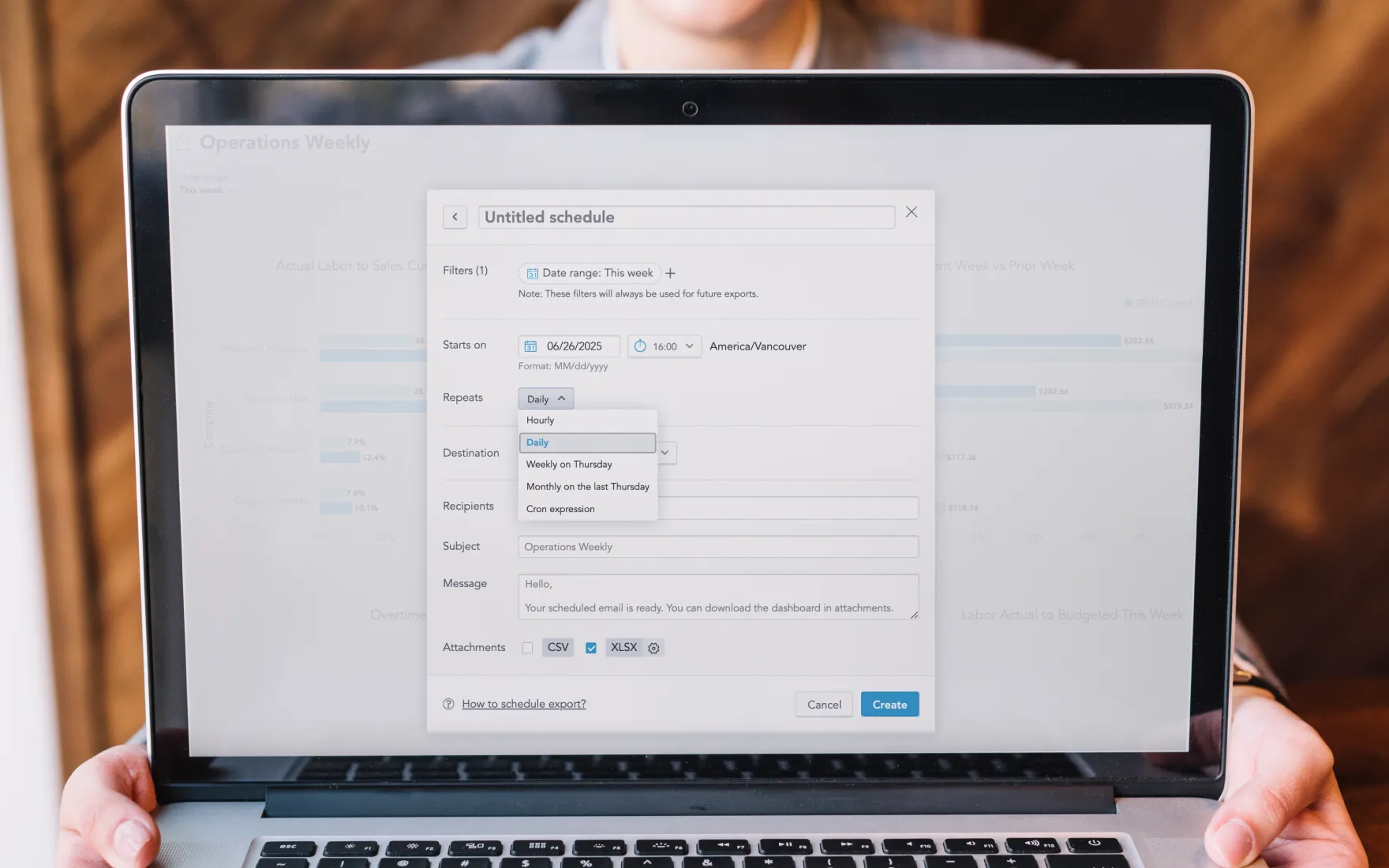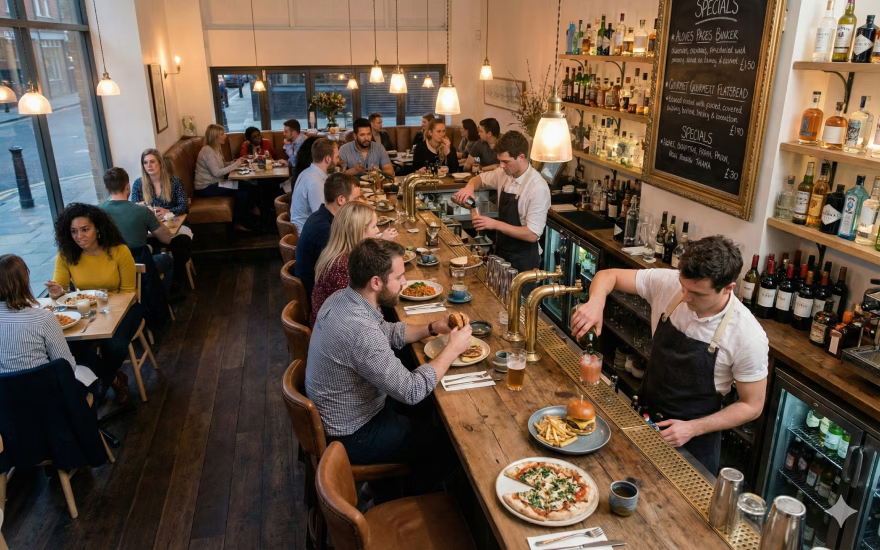Designing a Prix Fixe Menu for the Winter Holidays

The winter holiday season is one of the most magical times of the year, and for restaurants, it’s also a golden opportunity to shine. Offering a prix fixe menu for Thanksgiving, Christmas, or New Year’s Eve is an excellent way to attract diners seeking a festive dining experience. These curated menus can showcase your chef’s talents, streamline operations, and drive revenue.
In this guide, we’ll explore how to design the perfect prix fixe menu tailored for the holidays. From choosing seasonal dishes to crafting a pricing strategy, we’ll ensure you’re ready to make this winter your restaurant’s most successful season yet!
What Is a Prix Fixe Menu?
A prix fixe menu is a set menu offered at a fixed price, typically consisting of multiple courses such as an appetizer, main course, and dessert. Some holiday prix fixe menus may even include wine pairings or special add-ons. Popular during special occasions, this dining format simplifies decision-making for guests while giving restaurants control over food costs and portion sizes. A limited menu also ensures fresh ingredients and increases kitchen efficiency.
Why Offer a Prix Fixe Menu During the Holidays?
Prix fixe menus are a staple for holiday dining, offering advantages for both restaurants and guests. These menus are beloved not only for elevating the dining experience but also for simplifying operations during one of the busiest times of the year. Let’s dive into how they can benefit your restaurant this holiday season:
1. Streamlined Operations
Running a restaurant during the holidays can be hectic, but a prix fixe menu simplifies the workflow. By limiting the options, your kitchen staff can focus on perfecting a smaller selection of dishes, reducing preparation times and minimizing errors. This efficiency speeds up service, ensuring customers are satisfied and allowing your team to turn more tables. Additionally, front-of-house staff can operate more smoothly with fewer menu details to explain, improving overall guest satisfaction.
2. Revenue Predictability
With a pre-determined cost per guest, a prix fixe menu provides clear revenue expectations for each table. This consistency helps you forecast profits more accurately, plan your inventory with confidence, and avoid overstocking. For guests, the transparency of knowing their total spend upfront creates a sense of value, especially when the menu offers a variety of courses or exclusive dishes.
3. Showcase Creativity
The holidays are the perfect time for chefs to shine, and a prix fixe menu gives them a chance to flex their culinary muscles. Crafting seasonal dishes with ingredients like cranberries, chestnuts, or truffles adds a festive touch and highlights the creativity of your kitchen. By focusing on high-margin, in-season ingredients, chefs can create elevated dishes that not only delight guests but also boost profitability.
4. Enhance the Dining Experience
A prix fixe menu turns a meal into an event, giving diners the feeling that they’re part of something special. This curated experience often resonates deeply during the holidays, when customers are seeking meaningful celebrations with friends and family. The exclusivity and thoughtfulness of a pre-planned menu encourages diners to share their positive experiences — whether by word of mouth, glowing reviews, or social media posts. The added prestige of a prix fixe option may also attract new customers seeking something unique during the holiday rush.
Incorporating a prix fixe menu is a win-win situation: it’s a marketing opportunity, a creative outlet, and a way to stand out in a competitive market. By offering a thoughtfully designed menu, you’ll create memorable experiences that drive repeat business long after the holidays are over.
How to Design a Prix Fixe Menu for the Holidays
Crafting a winter prix fixe menu requires a thoughtful approach. Here’s how to create a menu that’s festive, cost-effective, and irresistible to your guests.
1. Highlight Seasonal Ingredients
Seasonal ingredients not only taste better but are often more cost-effective. Incorporate winter staples like squash, root vegetables, game meats, and warming spices such as cinnamon or nutmeg.
- Thanksgiving: Think turkey roulades, pumpkin bisque, or cranberry-glazed pork.
- Christmas: Highlight roasted goose, prime rib, or chestnut stuffing.
- New Year’s Eve: Consider indulgent dishes like lobster, filet mignon, or black truffle risotto.

2. Offer Customizable Options
Provide diners with choices for each course to appeal to a broader audience and to account for dietary restrictions. For example:
- Appetizer Options: Butternut squash soup, roasted beet salad, or smoked salmon tartare.
- Main Course Options: Herb-crusted lamb, pan-seared salmon, or a vegetarian risotto.
- Dessert Options: Eggnog panna cotta, chocolate Yule log, or a spiced pear tart.
3. Set the Right Price
Pricing should cover food costs while still offering value to your guests. Take these factors into account:
- Ingredient costs — seasonal ingredients help here
- Portion sizes appropriate for your dining style
- Competitor pricing for holiday menus
Plating and Presentation for Holiday Prix Fixe Menus
During the holidays, plating and presentation matters more than ever. Here’s how to make your dishes Instagram-worthy:
1. Incorporate Festive Colors
Use garnishes like pomegranate seeds, fresh herbs, or edible gold leaves to add holiday flair.
2. Emphasize Seasonal Themes
Choose plating that reflects the season. Rustic wooden boards can evoke a cozy Thanksgiving feel, while sleek white plates with metallic accents are perfect for New Year’s Eve.
3. Balance Elegance and Functionality
Plates should complement the dish while being practical for service. Avoid oversized plates that make portions look sparse or small dishes that feel cramped.
Marketing Your Holiday Prix Fixe Menu
Once your menu is finalized, it’s time to spread the word. Here are some strategies to ensure your holiday menu is a hit:
1. Social Media Campaigns
Post tantalizing photos of each dish, holiday-themed videos, and behind-the-scenes shots of your kitchen preparing for the holidays. Don’t forget to use seasonal hashtags like #HolidayDining or #NYEats.
2. Email Marketing
Send your customer list an email featuring the full menu, pricing, and how to make a reservation. Highlight any early-bird specials to encourage bookings.
3. Collaborate with Local Media
Partner with local bloggers, food influencers, or even your community’s newspaper to get the word out about your special holiday offerings.

Tracking the Success of Your Holiday Prix Fixe Menu
After the festive season ends, it’s essential to assess the performance of your holiday prix fixe menu. Evaluating its success isn’t just about looking at revenue; it involves a comprehensive review of guest satisfaction, operational efficiency, and marketing effectiveness. This data-driven approach ensures that each successive year is better than the last.
Key Metrics to Monitor
1. Sales Data:
- Guest Orders: Track how many guests opted for the prix fixe menu compared to your standard menu. A high adoption rate indicates that your marketing and menu design resonated well with customers.
- Average Spend Per Guest: Analyze whether the prix fixe menu increased the average spend per diner. This metric helps determine the menu’s profitability and its contribution to overall revenue.
- Peak and Off-Peak Performance: Note if the menu drove more traffic during traditionally slower periods, such as early or mid-week evenings.
2. Customer Feedback:
- In-Person Surveys: Train servers to casually ask diners about their experience, focusing on what they loved and what could be improved.
- Follow-Up Emails: Use reservation data to send post-visit surveys. Include specific questions about menu quality, portion sizes, service, and overall experience.
- Online Reviews: Monitor platforms like Google, Yelp, and social media for feedback. Praise can validate your efforts, while criticism can provide actionable insights.
3. Operational Metrics:
- Kitchen Efficiency: Assess whether the prix fixe menu streamlined your kitchen operations. Did it reduce preparation complexity, or were there delays during service?
- Ingredient Utilization: Review food waste and ingredient usage. A well-planned prix fixe menu should minimize waste by efficiently repurposing ingredients across dishes.
- Staff Workflow: Evaluate how the menu impacted your front-of-house and back-of-house teams. Were servers able to describe and deliver dishes effectively? Did chefs feel overburdened or find the menu manageable?
4. Marketing Effectiveness:
- Reservations and Walk-Ins: Track how your prix fixe menu impacted reservations versus walk-in traffic. Marketing campaigns should lead to a noticeable increase in advance bookings.
- Engagement Metrics: Measure the success of promotional efforts, such as social media impressions, clicks on email campaigns, or website traffic spikes.
- Promotional Offers: Analyze the response to any bundled deals or discounts offered alongside the prix fixe menu to gauge their effectiveness in driving sales.
How to Use This Data
Once you’ve gathered and analyzed these metrics, use the insights to improve your future menus and marketing strategies:
- Menu Adjustments: Identify which dishes were the most and least popular, then refine next year’s offerings to include more crowd-pleasers.
- Pricing Strategy: If customers consistently praised value for money, you might consider a slightly higher price next year. Conversely, if pricing was a sticking point, explore ways to lower costs without sacrificing quality.
- Operational Changes: Address any bottlenecks in the kitchen or service flow. If preparation times caused delays, consider offering dishes that can be prepped earlier without compromising freshness.
- Enhanced Marketing: Focus your efforts on the channels and campaigns that delivered the best return on investment. For example, if Instagram drove the most engagement, double down on visual promotions next season.
By consistently monitoring these metrics and acting on the findings, your holiday prix fixe menu will not only delight your guests but also boost your restaurant’s profitability and reputation year after year.
Sample Holiday Prix Fixe Menu
Here’s an example of what your winter prix fixe menu might look like:
Thanksgiving Prix Fixe
- Appetizer: Roasted Pumpkin Soup with Toasted Pepitas and Sage Oil
- Main Course: Herb-Stuffed Turkey Roulade with Cranberry Reduction and Root Vegetable Mash
- Dessert: Pecan Pie Cheesecake with Bourbon Caramel Sauce

Christmas Prix Fixe
- Appetizer: Chestnut and Mushroom Velouté with Thyme Croutons
- Main Course: Prime Rib with Red Wine Jus, Brussels Sprouts, and Truffle Mashed Potatoes
- Dessert: Chocolate Yule Log with Hazelnut Cream
New Year’s Eve Prix Fixe
- Appetizer: Lobster Bisque with Chive Oil and Garlic Toast
- Main Course: Seared Filet Mignon with Black Truffle Butter and Wild Mushroom Risotto
- Dessert: Champagne-Infused Sorbet with Fresh Berries
Leave the Administrative Work to Push
Offering a prix fixe menu during the holidays is a win-win for restaurants and guests alike. It streamlines operations, ensures predictable revenue, showcases culinary creativity, and elevates the dining experience. By curating a memorable and festive menu, you’ll not only delight your customers but also set your restaurant apart during the busiest season of the year.
While you focus on designing the perfect holiday menu, Push can help streamline your restaurant’s operations. From payroll solutions to automated scheduling and time trakcing, Push is an all-in-one people management software tailored for restaurants.
Get started today to make this holiday season your most efficient — and profitable — yet! Book your free consultation now.



